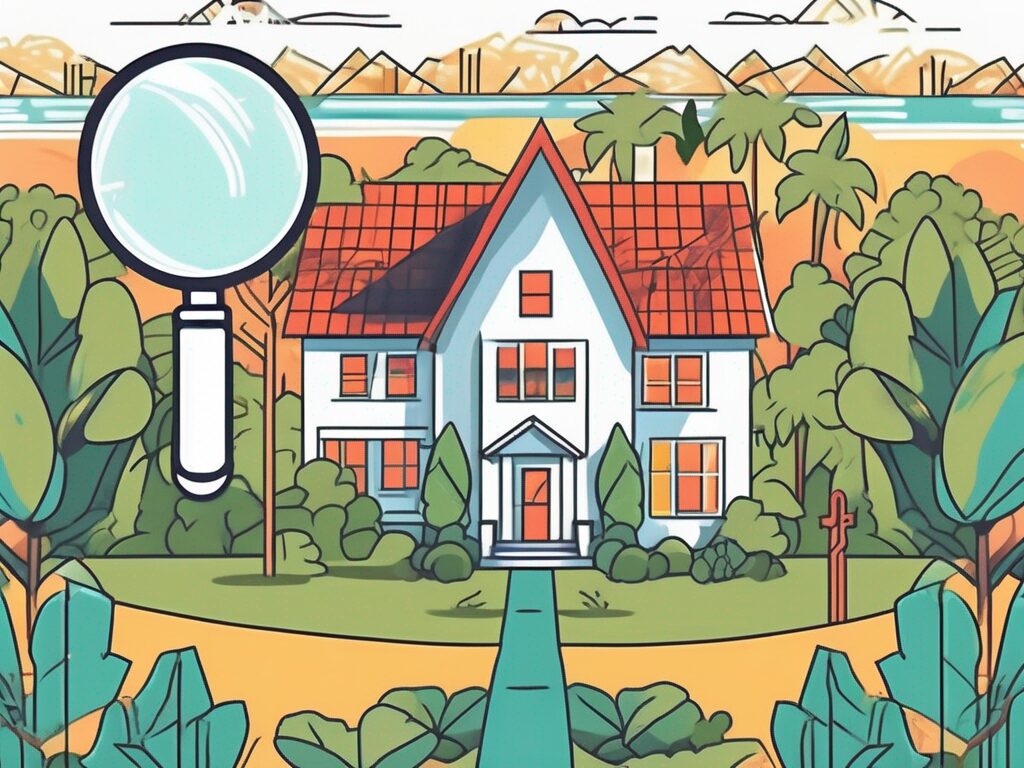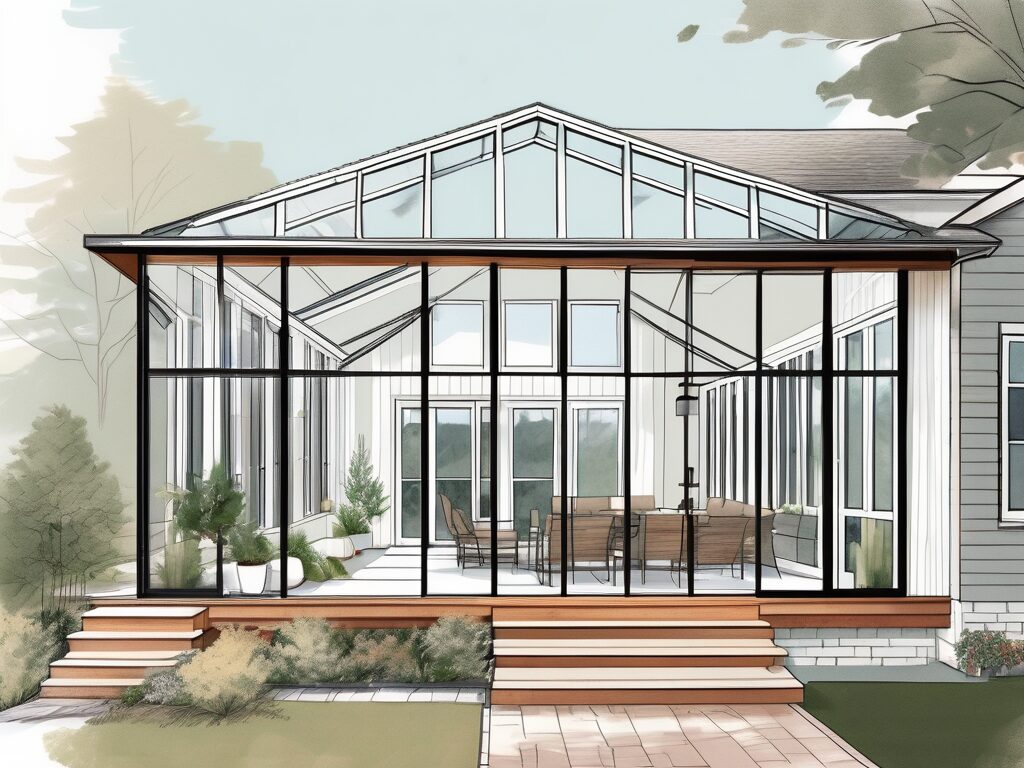
Agent A-Team or Solo Superhero? Finding the Right Real Estate Partner for Your Selling Journey in Wildwood Florida
When it comes to selling your home in Wildwood, Florida,…
January 29, 2024
If you are considering adding a sunroom to your home, one of the most important factors to consider is the cost. Understanding the expenses involved can help you plan and budget accordingly. In this article, we will break down the different aspects that contribute to the cost of adding a sunroom to your home. By assessing your home’s value, understanding the cost of different types of sunrooms, exploring prefab options, and calculating the return on investment, you will be able to make an informed decision about this exciting home renovation project.
Your home’s value is a crucial factor to consider before renovating. It is important to understand how the addition of a sunroom will impact your home’s worth. To assess your home’s value, you can consult a real estate professional or use online tools that provide estimates based on recent sales in your area. By knowing your home’s value, you can determine how much you should invest in your sunroom addition while still maintaining a reasonable return on investment.
Knowing your home’s value before renovations is essential to avoid over-improving your property. Adding a sunroom can significantly increase the appeal and functionality of your home, but if the cost of the addition exceeds your home’s potential value increment, you may not recoup your investment when you sell. By conducting a comprehensive assessment of your home’s value, you can determine an appropriate budget for your sunroom addition.
When assessing your home’s value, it is important to consider various factors that can influence its worth. Location plays a significant role in determining property values. Homes in desirable neighborhoods or areas with good school districts tend to have higher values. Additionally, the size and condition of your home also impact its value. A well-maintained property with spacious rooms and modern amenities is likely to be more valuable than a smaller, outdated home.
Another aspect to consider is the current real estate market conditions. The value of homes can fluctuate based on supply and demand. If the market is saturated with similar properties for sale, it may be more challenging to sell your home at a higher price. On the other hand, if there is a high demand for homes in your area, you may have a better chance of selling at a premium.
Furthermore, it is essential to analyze recent sales in your neighborhood to get a better understanding of the market trends. By comparing the sale prices of similar homes in your area, you can gauge the potential value of your own property. This information can help you make informed decisions about the extent of your sunroom addition and the overall budget you should allocate.
Consulting a real estate professional can provide valuable insights into your home’s value. These professionals have extensive knowledge of the local market and can provide a more accurate assessment of your property’s worth. They can also offer advice on which renovations are likely to yield the highest return on investment, considering the specific characteristics of your home and the preferences of potential buyers in your area.
Online tools and resources can also be helpful in estimating your home’s value. Many websites provide free home value estimators that utilize algorithms and data from recent sales to provide an estimate of your property’s worth. While these estimates may not be as accurate as a professional appraisal, they can give you a general idea of your home’s value and help you plan your sunroom addition accordingly.
In conclusion, assessing your home’s value before renovating, especially before adding a sunroom, is crucial for making informed decisions about your investment. By considering factors such as location, property size and condition, market conditions, and recent sales in your area, you can determine an appropriate budget and ensure that your renovation efforts align with the potential value increment of your home. Whether consulting a real estate professional or utilizing online tools, taking the time to assess your home’s value will ultimately help you maximize your return on investment.
Three-season sunrooms are a popular choice for homeowners who want to enjoy the beauty of the outdoors without being exposed to the elements. These sunrooms are designed to be used during spring, summer, and fall, providing a comfortable and relaxing space to unwind and enjoy the surrounding scenery.
One of the key factors that sets three-season sunrooms apart from their four-season counterparts is the price. Due to their design and lack of insulation, three-season sunrooms are typically less expensive. This makes them a more affordable option for homeowners who want to add extra living space to their homes without breaking the bank.
When it comes to the cost of a three-season sunroom, there are several factors that can influence the price range. One of the most important factors is the size of the sunroom. Larger sunrooms require more materials and labor, which can drive up the expenses. It is important to carefully assess your space and determine the size that best fits your needs and budget.
When considering the size of your three-season sunroom, there are a few things to keep in mind. First, think about how you plan to use the space. Do you envision it as a cozy retreat for reading and relaxation, or do you want it to be a versatile area for entertaining guests? The intended use of the sunroom can help you determine the ideal size.
Additionally, the height of the sunroom is another factor to consider. Higher ceilings can create a more spacious and open feel, but they can also increase the cost of construction. The type of foundation required for the sunroom can also influence the overall cost. A sunroom with a concrete foundation may be more expensive than one with a simpler foundation.
It’s also worth noting that the cost of a three-season sunroom can vary based on the materials used. The choice of materials can impact both the aesthetic appeal and the durability of the sunroom. For example, opting for high-quality windows and doors can enhance the energy efficiency of the sunroom, but it may come at a higher price.
Lastly, additional features such as heating and cooling systems, lighting fixtures, and flooring options can also affect the cost. These features can add convenience and comfort to your sunroom, but they may require additional expenses.
Overall, when planning to add a three-season sunroom to your home, it’s important to carefully consider all the factors that can influence the cost. By doing so, you can make informed decisions that align with your budget and create a beautiful and functional space that you can enjoy for years to come.
Four-season sunrooms are designed to be used all year round, providing insulation and climate control. These sunrooms are built to withstand the changing seasons and offer greater versatility compared to three-season sunrooms. However, due to the added features and materials required for year-round use, four-season sunrooms are generally more expensive.
When it comes to enjoying the beauty of the outdoors while staying comfortable indoors, four-season sunrooms are the ultimate solution. These sunrooms are designed to seamlessly blend with the existing architecture of your home, creating a space that can be enjoyed throughout the year, regardless of the weather outside.
One of the key factors that contribute to the cost of a four-season sunroom is its size. Similar to three-season sunrooms, the larger the sunroom, the more materials and labor will be required. However, with a four-season sunroom, size becomes even more crucial as it directly impacts the overall functionality and comfort of the space.
When considering the size of your four-season sunroom, it’s important to take into account the purpose you have in mind for the space. Are you looking to create a cozy reading nook, a spacious entertainment area, or a home office with a view? The size of your sunroom will greatly depend on how you plan to use it.
Additionally, factors such as insulation, heating, and cooling systems will contribute to the overall cost of a four-season sunroom. These features are essential for maintaining a comfortable temperature throughout the year, regardless of the weather conditions outside. High-quality insulation materials and energy-efficient heating and cooling systems will ensure that your sunroom remains cozy in the winter and cool in the summer.
Another aspect to consider when estimating the expenses involved in building a four-season sunroom is the type of materials used. From the framing to the windows and doors, each component of the sunroom will impact both the cost and the overall aesthetic appeal of the space. Opting for durable and low-maintenance materials will not only enhance the longevity of your sunroom but also save you money in the long run.
Furthermore, the location of your sunroom within your home can also affect the cost. If your sunroom requires additional structural modifications or if it needs to be integrated into an existing space, the expenses may increase. It’s important to consult with a professional contractor who can assess the feasibility of your desired sunroom location and provide you with an accurate cost estimate.
Ultimately, when it comes to building a four-season sunroom, it’s essential to consider all these factors to ensure that you create a space that meets your needs and fits within your budget. By carefully planning and understanding the cost implications, you can enjoy the benefits of a four-season sunroom for years to come.
Prefab sunrooms offer a cost-effective alternative to custom-built sunrooms. These sunrooms are manufactured in a factory and then assembled on-site. Prefabricated sunrooms come in various designs and sizes, allowing you to choose an option that suits your preferences and budget.
When considering the addition of a sunroom to your home, it’s important to weigh the benefits and costs. Prefab sunrooms can be a great option for those looking to enhance their living space without breaking the bank. Not only are they more affordable than custom-built sunrooms, but they also offer a quicker installation process.
One of the advantages of prefab sunrooms is the ability to choose from a wide range of designs and sizes. Whether you’re looking for a small cozy space to relax and enjoy the view or a larger sunroom to entertain guests, there is a prefab option to suit your needs. Additionally, these sunrooms can be customized to match the style of your home, ensuring a seamless integration.
When exploring prefab sunroom options, it is essential to compare the cost and quality from different manufacturers. Prices can vary based on the materials used, the level of customization, and the reputation of the manufacturer. Researching and comparing different options will enable you to find a high-quality prefab sunroom that fits within your budget.
It’s important to consider the materials used in the construction of prefab sunrooms. While some manufacturers may use lower-quality materials to cut costs, others prioritize durability and longevity. Investing in a sunroom made from high-quality materials may require a larger upfront cost but can save you money in the long run by reducing maintenance and repair expenses.
Another factor to consider when comparing prefab sunrooms is the level of customization offered by different manufacturers. Some companies may offer a limited selection of designs and sizes, while others provide a wide range of options to choose from. If you have specific requirements or preferences, it’s important to find a manufacturer that can accommodate them.
Additionally, the reputation of the manufacturer should not be overlooked. Reading customer reviews and testimonials can give you valuable insights into the quality and reliability of a particular manufacturer. Choosing a reputable manufacturer with a track record of delivering high-quality prefab sunrooms can give you peace of mind knowing that you’re investing in a product that will stand the test of time.
In conclusion, exploring prefab sunrooms and comparing the cost and quality from different manufacturers is essential when considering this home addition. By conducting thorough research and weighing the benefits and costs, you can find a high-quality prefab sunroom that meets your needs and budget. Whether you’re looking to create a cozy retreat or expand your living space, a prefab sunroom can be a cost-effective and stylish solution.
When considering the addition of a sunroom to your home, it is essential to have a comprehensive understanding of the various expenses involved. By breaking down the costs and estimating each component, you can develop an accurate budget for your sunroom addition. Let’s delve into the different factors that contribute to the overall cost:
Before embarking on any home addition project, it is crucial to obtain the necessary permits from your local authorities. These permits ensure that your sunroom meets the building codes and regulations. The cost of permits can vary depending on your location and the complexity of the project.
The foundation is the backbone of any structure, and adding a sunroom is no exception. Depending on the existing foundation of your home, you may need to reinforce or extend it to accommodate the new addition. The cost of foundation work will depend on factors such as the size of the sunroom, the type of foundation needed, and the soil conditions of your property.
The choice of materials for your sunroom can greatly impact the overall cost. Options range from basic aluminum frames to high-end custom designs with energy-efficient glass panels. Additionally, the type of flooring, insulation, and roofing materials you select will also contribute to the overall cost of the project.
Hiring skilled professionals to construct your sunroom is essential to ensure a high-quality and structurally sound addition. The cost of labor will depend on factors such as the complexity of the design, the time required for construction, and the prevailing labor rates in your area.
Adding electrical outlets, lighting fixtures, and heating or cooling systems to your sunroom will require the expertise of an electrician. The cost of electrical work will depend on the extent of the wiring needed and the complexity of the electrical system you desire.
If you plan to use your sunroom year-round, it is crucial to consider the installation of heating and cooling systems. The cost will depend on factors such as the size of the sunroom, the type of system you choose (e.g., ductless mini-split, radiant floor heating), and the energy efficiency rating of the equipment.
The finishes you choose for your sunroom, such as paint, trim, and window treatments, can greatly impact the overall aesthetic appeal. The cost of finishes will depend on factors such as the size of the sunroom, the quality of materials, and your personal preferences.
By carefully considering each of these factors and estimating their respective costs, you can develop a comprehensive budget for your sunroom addition. Remember to account for any unforeseen expenses that may arise during the construction process. With proper planning and budgeting, you can create a beautiful and functional sunroom that adds value to your home and enhances your quality of life.
Calculating the return on investment (ROI) is essential when considering any home renovation project. While a sunroom can bring enjoyment and added living space, it is also an investment. By comparing the cost of the sunroom addition to the potential increase in your home’s value, you can determine whether the project is financially beneficial for you in the long run.
Before embarking on your sunroom addition, consider these essential tips to ensure a successful project:
By following these tips, you can ensure that your sunroom addition meets your expectations and provides you with a beautiful and functional space to enjoy throughout the year.
In conclusion, calculating the cost of adding a sunroom to your home involves assessing your home’s value, understanding the cost of different sunroom options, exploring prefab alternatives, and calculating your ROI. By carefully considering these factors and following essential tips, you can make an informed decision and successfully add a sunroom to your home. Enjoy the benefits of extra space and a connection with the outdoors in a cost-effective manner!

If you want the Richr team to help you save thousands on your home just book a call.
 Book a call
Book a call